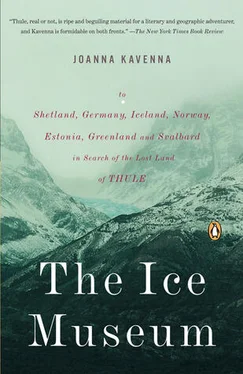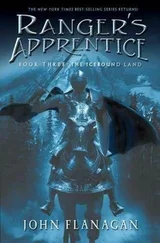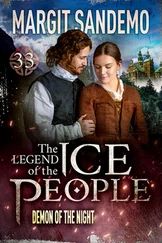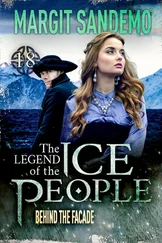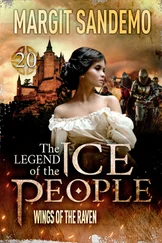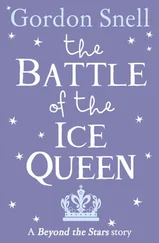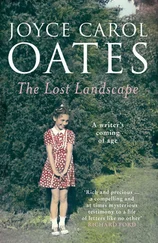Driving into the evening, I crossed the purple hills of the island of Yell, on the way to Unst, the most northerly island in Britain. I drove through miles of empty rock. The sun was fading across the treeless hills. The islands along the coast were green and bulbous, lying in the sea like inflated handkerchiefs. The few small villages sprawled around the firths. There were ruined houses on the cliff tops, open to the wind. A single-lane road spanned the island of Yell. Arriving at a café by the shore I waited for a ferry to the island of Unst. The sun cast a dying light across the water. And the island of Unst was nearly empty; the stark cliffs stood deserted, as a handful of cars moved under their blankness towards the north. At intervals, the road passed through pebbledash towns, council rows in the middle of nothingness, spreading around the bays. Muness Castle, Britain’s most northerly ruined former fortress, stood in a field, a slab of crumbled stone tapered into turrets. Laurence Bruce had begun it, an inscription over the entrance said, in the year 1598. The castle stood incongruously among the low stone cottages, protesting its former grandeur, though its roof had fallen in, and there was no one else there to visit it.
The sea was pale; the rocks were jagged at their edges, rising to plateaus. At Skaw, where the island stopped, I walked on the rough grass towards the beach, as the birds whirled above the cliffs. There was a marquee on the beach with nothing inside it, and an empty car parked by a stream. I walked to the edge of Britain, once the last land of the world. The moss was a cold green shade, spectral in the half-light, and the stark cliffs rose to empty grass plains. As the evening fell I stood on the empty cliff, looking at the sea stretching away towards the horizon. A frigid wind raced in from the sea. There was a brilliant, wine-rich sunset.

BY A ROUTE OBSCURE AND LONELY
HAUNTED BY ILL ANGELS ONLY
WHERE AN EIDOLON, NAMED NIGHT,
ON A BLACK THRONE REIGNS UPRIGHT,
I HAVE REACHED THESE LANDS BUT NEWLY
FROM AN ULTIMATE DIM THULE
FROM A WILD WEIRD CLIME THAT LIETH, SUBLIME
OUT OF SPACE . . . OUT OF TIME!
“DREAMLAND,” EDGAR ALLAN POE (1809-1849)
I left this outpost of my country, this luminescent set of islands, and travelled further north. It was an inevitable momentum. The idea of Thule expanded with the maps. As knowledge of the north increased, so the ends of the world shifted, and a land beyond the limits of the known world had to move with changes in cartography. It was a story about unbounded curiosity; as new northern lands were found, so Thule was reapplied, sometimes for rhetorical effect, sometimes from a sense that a recent discovery must be the last land, the mysterious land sighted by Pytheas. The idea of Thule was entwined with mysteries and gaps. It was intriguing to imagine Pytheas arriving in a northern land, finding a midnight sun, and sailing home. But it was an act of imagination even to think about Pytheas’s journey; from the surviving fragments it was hardly possible to say for certain where Thule might have been. Any discussion of Thule as a particular place was an elaborate piece of reconstruction. It was like rebuilding an ancient temple from a few scattered stones. A hypothetical version of Thule could run along, certain of a few things, plunging into vagaries on others. Thule was a land where the sun shone through the summer nights, and where the winters were dark. It might have been near a congealed ocean, or near a sluggish ocean, or near a frozen ocean. It might have been a place inhabited by barbarians of some sort, though this was uncertain. It might have been six days’ sail north of Britain, but this could have meant due north, or north-east, or north-west, and Pytheas had previously found it difficult to calculate distances with accuracy. It was a land with a curious array of qualities—not exactly like anywhere, but redolent of many places. All the lands of the north contained elements of Thule—from Shetland to Svalbard. Even as I travelled, they were lands still valued for their beauty and emptiness. Pure in parts, with the soft sunshine gleaming across their ancient rocks.
For the Victorians on their steamers, Shetland was hardly a contender. Iceland was the only plausible Thule. They stayed stubbornly on their ships, passing the Faroe Islands in a flurry of excitement, pointing out the turf houses of Tórshavn and admiring the great circling crowds of seabirds. Then they waited for Iceland to appear on the horizon. Mrs. Alec Tweedie, William Morris, Anthony Trollope, Sir Richard Burton, understood that the rough outline of the north was almost complete, the pencil lines were convening on the maps. But they wanted Ultima Thule to be a land unlike any other, a land weird enough for a mystery lasting thousands of years. They imagined travelling to Thule as a ride to a Gothic Utopia. They travelled with Edgar Allan Poe in mind, reciting his fantasy verse on the theme of Thule:
I HAVE REACHED THESE LANDS BUT NEWLY
FROM AN ULTIMATE DIM THULE
FROM A WILD WEIRD CLIME THAT LIETH, SUBLIME
OUT OF SPACE . . . OUT OF TIME!
They wanted to see nature in its weirdest outfits, performing its most hysterical tantrums and fits. In the lands of the Icelandic Thule, the eternal works of nature were grotesque, and scarcely even eternal. The land shifted throughout the ages, birthing new mountains and islands, the rocks were constantly shattered and flooded with steaming waters. Iceland was a land where flames burst from the ice and burning lava spread across the land. A land in a state of flux: the volcanic flames flickering above ancient glaciers, red on white, the fires fading into the purple blackness of the lava fields. A land where ice mountains melted and flames cooled to rock. Bold, callous colours, crazy stretches of whiteness lurking in the gaps among the barren mountains, savage darts of flame in the dusk. The Victorians came for the mountain of Hekla, once thought to be the entrance to hell, or for Snaefellsjökull, Jules Verne’s entrance to the centre of the earth. They came for the view over the ragged lava piles, and the moon landscapes. They came for the thousand cones and spikes of volcanic ground, forged in successive eruptions. A place like Thule: an interim point between the familiar and the outlandish.
When the Victorians arrived, there was a living convention of perorations to the ragged lava plains, the devil holes, the sulphur pots, the lairs of Beelzebub, each bubbling spring or jagged rift representing a different aspect of the Dark Prince. Most of the travellers’ hysteria focused around the Geysir, though a few amazed words were reserved for the volcano Krafla in the north of Iceland and the terrible former Viking capital of Thingvellir, where the earth cracked in two. In the late eighteenth and early nineteenth centuries Dr. Uno von Troil, Mr. William Jackson Hooker, Sir George Steuart Mackenzie, and Ebenezer Henderson had vied for exploratory firsts. They were frequently astonished, like Dr. Von Troil, who travelled in 1772, finding a devastated land of barren mountains, eternal snow and vitrified cliffs. Sir George Steuart Mackenzie, Baronet, Fellow of the Royal Society, travelling in 1810, found that despite his various titles he could not convey the mingled raptures of wonder, admiration and terror with which his breast was filled, and that was just at the sight of the Geysir, the exploding hot spring. These early visitors divided their bemusement into sub-headings: ‘On the Pestiferous Effects of the Air,’ ‘Of Steeped or Macerated Fish,’ or ‘Of the Peculiar Instinct of the Horses in this District.’ They were transfixed by the fantastic groups of hills, craters and lava, the distant snow-crowned glaciers, the mists rising from a waterfall, the profound silence, glowering clouds, the crazed element of fire ravaging the land.
Читать дальше
